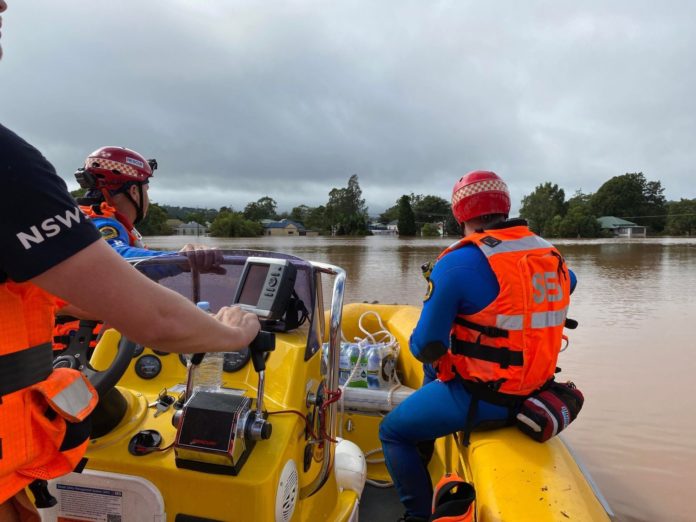The Insurance Council of Australia (ICA) is visiting Lismore this week to meet with businesses, government, and community members to hear how the region is recovering and rebuilding three years on from the devastating 2022 floods.
The catastrophic event that impacted the Northern Rivers region and South-East Queensland in February and March of 2022 remains the costliest insured event in Australia’s history.
Insurers received more than 242,000 claims from the event at a cost of $6.4 billion. The ICA says more than 99% of these claims are closed, with insurers continuing to receive a small number of new claims each month from this event.
During the visit to Lismore, ICA CEO, Andrew Hall, joined with local businesses to participate in a roundtable alongside Business NSW and the NSW Reconstruction Authority to hear about the region’s progress towards recovery.
The roundtable included discussion of a range of mitigation measures put in place by local businesses to improve their resilience against future extreme weather events, including raising or relocating homes in high-risk locations and businesses that have been built back better.
“Having been in Lismore in the days after the floodwaters receded and many times since, you can’t help being struck by the way in which the community has got back on its feet and is taking significant steps to better protect people from future events,” said Mr Hall.
“Through the roundtable and personal engagement with those affected by the 2022 floods, it is clear that Lismore is trying new and innovative ways to improve community resilience, with a number of homeowners and businesses in the region proactively investing in mitigation measures to reduce the impact of future floods.
“However, Lismore remains one of the most flood-exposed communities in the country, and the reality is that much more investment in hard infrastructure is needed to better protect this unique city.
“Through the roundtable and personal engagement with those affected by the 2022 floods, it is clear that many have taken resilience into their own hands, with a number of homeowners and businesses in the region proactively investing in mitigation measures to reduce the impact of future floods.
“However, this region is amongst the most densely populated areas on the east coast and is exposed to our most expensive extreme weather events, a scenario that’s unlikely to change quickly.
“We need action to protect Australian communities in mother nature’s firing line. This means investing in resilience-enhancing infrastructure, strengthening building stock, and reforming land use planning, and requires significant investment from and collaboration with governments.”
NSW Parliamentary Secretary for Disaster Recovery and State Member for Lismore, Janelle Saffin said she recognised the Northern Rivers region had major insurance challenges, notably access and affordability.
“And we are acting to get change. This is global and it is not like it was unknown,” she said.
“On behalf of our community and supported by the Reconstruction Authority, the Community Leaders Forum put forward the most comprehensive submission regarding insurance (and approaches to address access and affordability) to the Federal Parliamentary Inquiry into insurance-related matters.
“Their report recommended that government consider our submission and I am driving this forward as one of the 2025 projects, along with our regional Masterplan and the CSIRO Northern Rivers Resilience Initiative (NRRI) project that will give us mitigation options. These are interlinked.”
Business NSW Regional Director, Jane Laverty said the organisation had been working with the ICA since the 2022 event to navigate impacts and review options for alternative insurance as well as a collective push for mitigation investment that would potentially shift the cost of
premiums to more affordable and accessible.
“Appropriate insurance has always been a critical component for well managed business operations and risk management strategies. However, insurance cover access and affordability has been significantly impacted by disaster events and in our region directly affected by the 2022 weather event,” said Ms Laverty.
“The impact of inaction is clear: uninsurable businesses lead to closures, job losses, and a weakened economy. Business NSW encourages all Government bodies and industry stakeholders to work together, act decisively and ensure a sustainable future for our business community,” she said.


